There are a few reasons why I selected this period.
First, his evolution and growth as a musician are clearly evident from the chronology represented by the recordings. If you exercise critical listening, then you can not only follow that evolution and growth, but also get a sense for where mainstream jazz was headed during that era. Ironically, it will also provide indications of Trane's own departure from what was then the mainstream that would culminate in Giant Steps, after which he would go in a totally different direction.
Second, the musicians from this era were playing in smaller ensembles - mainly trios, quartets and quintets - in smaller venues, so their use of dynamics were finely honed. This is well worth studying.
Finally, the rhythm sections backing Trane during the Prestige era in particular were solid. In fact, many if not most of his sessions were backed by Red Garland on piano, Paul Chambers on bass and Art Taylor on drums. For the time and the music those three and their other contemporaries who backed Coltrane were perfect.
The first known recordings Trane made were in a 1946 jam session that has been issued on First Giant Steps.

This is a fascinating glimpse into Trane's earliest recordings circa 1946 and 1954. The first eight tracks feature him - still in the US Navy - on alto saxophone, the instrument he started with.
If you go to the linked page you will see that the first eight tracks are divided between bebop and Nat King Cole tunes. The date and location are 13 July 1946 in Hawaii and the full ensemble (all sailors) are: Dexter Culbertson on trumpet, John Coltrane on alto sax, Norman Poulshock on piano, Willie Stauder on bass and Joe Theimer on drums. Benny Thomas is the vocalist on Embraceable You, It's Only a Paper Moon, Sweet Lorraine and Now's the Time.
Here he is on a track from the album doing his utmost to be Bird:
The remaining tracks are from a June 1954 radio broadcast from Los Angeles. These tracks are led by Ellington's star alto, Johnny Hodges, with Trane on tenor. Other personnel are: Harold "Shorty" Baker on trumpet, Lawrence Brown on trombone, , Call Cobbs on piano, John Williams on bass and Joe Marshall on drums.
Sound quality is adequate considering the sources (a 1946 jam session and a 1954 radio broadcast.) The historical value to a hard core Coltrane fan or an amateur like myself is significant. Casual listeners may want to pass this one up.
A better starting point in my opinion is Early Trane. This is a relatively inexpensive box set of mid-1950s John Coltrane that showcases his early development. There are collections that are heavily slanted towards his early years with Miles Davis, and there are others that are overwhelming for those who came to know Trane from his later years and are curious about what he did prior to A Love Supreme and later. This one is a perfect balance for the casual listener.
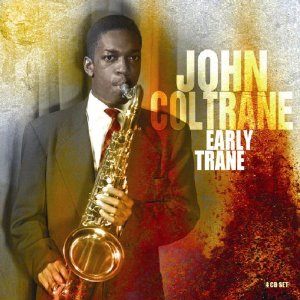
What this set provides is a collection of sessions strictly from 1956 and 1957 (with two exceptions noted below), most of which has Coltrane as a side man.
The exceptions I noted above are the first two tracks from CD 1: Beer Drinking Baby and We Love to Boogie.
Beer Drinking Baby was recorded circa 1949 in Los Angeles and published on the Mercury label. That Trane is actually the tenor on this track is somewhat disputed, and even the year and place have been questioned. Some accounts have it as New York and 1950.
We Love to Boogie is Trane with Dizzy Gillespie in 1951 and is reputedly his first recorded solo. Both pieces are R&B or R&B flavored, which is evidenced by We Love to Boogie:
The first three discs in this set are mainly Trane as sideman with Miles Davis, Tad Dameron, Red Garland, various incarnations of Prestige All Stars, with a sprinkling of Thelonious Monk (including one track from the July 1957 Thelonious Monk With John Coltrane, and Mal Waldron and Paul Quinichette.
Here are some samples:
From Disc 2
From Disc 3
As you can see (and hear), there are ample examples of Trane's early work in this set, as well as markers showing his evolution and growth. Moreover, the music - as I promised - is a study in dynamics. This set is probably all the early Coltrane most folks need. However, if you are obsessive-compulsive like me, then this would whet an appetite.
The price of being obsessive-compulsive is pretty steep these days, and when it comes to Coltrane's Prestige years the going rate is around $160 for the 16 disc set titled The Prestige Recordings.

- As much as I love Coltrane in that era, there are other albums I would rather purchase first
- Now that I am retired and on a fixed income I cannot always afford to indulge my impulses
- The set can be purchased in increments
- Side Steps featuring Trane as a sideman
- Interplay featuring him as co-leader
- Fearless Leader, as leader which the name implies
Here are the sets, one by one:
Side Steps

Five discs (plus a 72-page booklet.) An excellent review by Chris May covers this set in detail. I will say that the Red Garland tracks are among the highlights, but I am a Red Garland fan. Here is one I especially love tnat is track one on disc 4 (the line-up is Donald Byrd on trumpet, Trane on tenor, Red Garland on piano, George Joyner on bass and Art Taylor on drums:
One more, this from track 9 on disc 4 with Tadd Dameron on piano, Trane on tenor, John Simmons on bass and Philly Joe Jones on drums:
One note: you will not find Trane as Miles Davis' sideman in this set (although you will in Early Trane, which is an import.) You'll need yet another Prestige reissue set for the Davis/Coltrane collaborations: Legendary Prestige Quintet Sessions.
Interplay

The five discs in this set cover Coltrane as a co-leader from 1956 through 1958. Like all of the Prestige reissue sets this comes with a valuable booklet. In the case of this set, the booklet is 60 pages, and has liner notes by Nat Hentoff as well as album notes by renowned Lewis Porter (who is the author of John Coltrane: His Life and Music), as well as the original album notes. In other words, everything a jazz geek or amateur jazz historian could desire.
While Red Garland dominated Side Steps, Mal Waldron dominates this set by performing on twenty tracks compared to the eight that Tommy Flanagan are on, or the scant five that feature Red Garland.
I would be remiss if I failed to mention the importance of bass. All but four tracks feature Paul Chambers and Doug Watkins, the remaining four feature Julian Euell. While Chambers is considered to be one of the best ever, Watkins was a rising star who passed at too young an age and his inclusion in this set adds value to any bassist who wants to study his style. Art Taylor, possibly one of the most prolific drummers of the era, dominates the set. However, Jimmy Cobb, Louis Hayes and Ed Thigpen are also represented and are reasons for drummers to own this set.
From track 7, disc 3
Fearless Leader
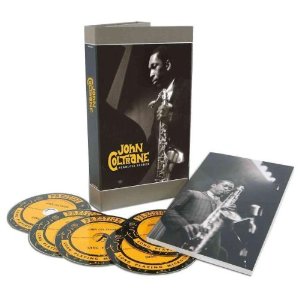
John Kelman's review of this set is in my opinion spot on. This set contains six discs that feature Coltrane as a leader starting in 1957. Of the three sets in the Prestige series this is the one I most like. Here are a few tracks from this album that validate my opinion:
Track 4, disc 6
If you are on a constrained budget Coltrans: Birth of a Genius has gems across all three of the above sets at a fraction of the price of any single one. Do note that while the attribution of this album is the Red Garland Trio, this album is not by, nor focused on, Garland or his trio. Red, Paul Chambers, Art Taylor and Philly Joe Jones, trio alumni, are well represented throughout the nearly four hours of superb music. However, so are others, including pianists like Monk and Mal Waldron, to name a few.
What you do get is Coltrane playing bebop and straight ahead jazz before he became enchanted with John Gilmore's ideas and extended them with his own group. As I stated, I personally prefer the John Coltrane of this period, so I consider this album to be a real treasure.
A full track listing and sound samples are on the page to which I linked this title. It would be hard for me to pick out any specific favorites because there are so many, but among my top choices would be the collaboration with Sonny Rollins on Tenor Madness (which does have Red Garland, Paul Chambers and Philly Joe Jones), as well as the collaborations with Monk. And, of course, the tracks with Miles. If I am not careful I'll wind up listing every track, so suffice to say that this album is a good sampling of earlier Coltrane before he carved out his own niche as a bandleader.
If you like circa 1950s/early 1960s jazz, you will probably find the 3 hours and 44 minutes of music on the album to be enjoyable. If you are a hard core Coltrane fan you probably have every track scattered across many albums, but this is a way to collect some of his best early work in one place.
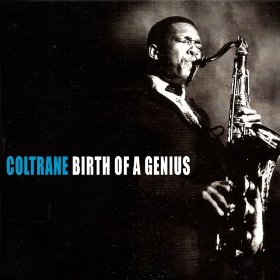
While my interest in Coltrane's music stopped after his first Atlantic recording, Giant Steps, many of his most avid fans focus on the Atlantic years and beyond. Here are a few recommendations that I'll throw out there, but cannot comment intelligently on given the fact that I infrequently listen to his later work:
The Heavyweight Champion: The Complete Atlantic Recordings of John Coltrane is a seven-CD set of everything he recorded for Atlantic:
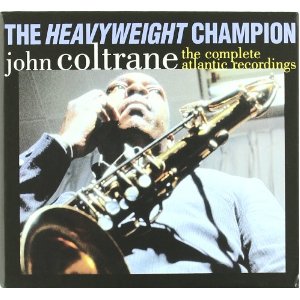
Coltrane: The Classic Quartet - The Complete Impulse! Studio Recordings comprised of eight CDs that includes everything he did in the studio for Impulse.

I do highly recommend The World According to John Coltrane, which is a short - some would say too short - documentary that clocks in around an hour.

I hope this piece piques your interest in one of the greatest jazz musicians of his era, and someone who continues to exert a major influence on music today.

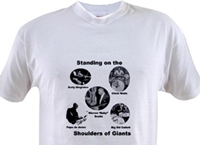

No comments:
Post a Comment